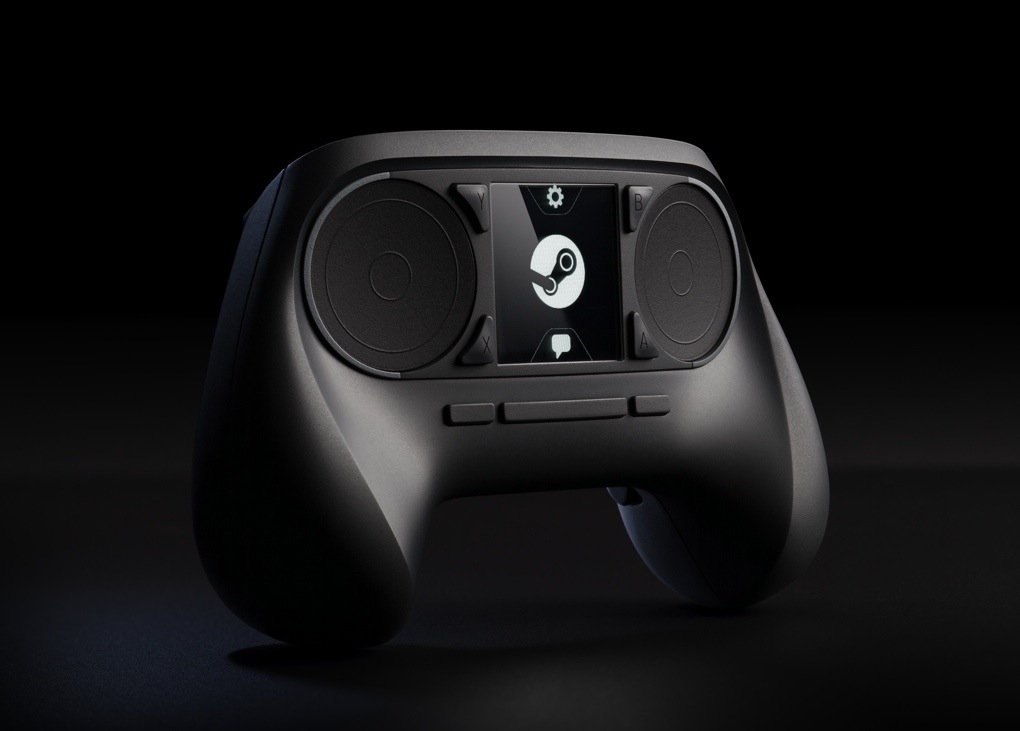One year ago, at CES 2014, Valve introduced a new kind of gaming PC, a Linux game console with a gamepad designed to be good enough to replace a mouse and keyboard. 14 PC manufacturers were on board, each creating a Steam Machine in its own image. And then… crickets. What the heck happened?
I’ve been following the Steam Machines story since the very beginning — hell, even before that. I imagined the Steam Machine before it even existed. But I’m starting to realise that I was part of the problem — hyping the idea long before it was ready.
Late 2013 was the perfect time to take a swing at the big game consoles. The PS4 and Xbox One had barely arrived on the scene, and the Wii U was the butt of every joke. When it came to gorgeous graphics, early games for the so called next-gen consoles couldn’t hold a candle to what you could already get on a good gaming computer. Steam had become a cornucopia of wonderful games at dirt cheap prices. A PC game console sounded like a fantastic idea.

But speaking with several PC manufacturers behind the scenes in the year or so since, I learned that the pieces to make that vision a reality simply weren’t in place. Valve wasn’t happy with the design of the Steam Controller, which used a pair of super-precise touchpads in place of analogue sticks, and a pretty confusing layout for gamers accustomed to Xbox and PlayStation. The Linux-based SteamOS wasn’t coming together fast enough to be a viable alternative to Windows. Support for basic features like Wi-Fi and non-Nvidia graphics weren’t fully coded at the time Valve went public with the idea. And, my sources at PC manufacturers have claimed, Valve wasn’t keeping up the lines of communication, leaving them more or less in the dark about when those necessities would be ready.
That’s why Valve decided to delay Steam Machines to 2015. That’s why last week, at CES 2015, I saw several computers that were supposed to be Steam Machines flying different colours instead.
You see, Valve’s decision to delay the program left hardware partners like Alienware scrambling to figure out whether to launch the computers they’d already built with Steam Machines in mind. Valve wouldn’t allow those partners to call them “Steam Machines” or use the Steam logo if they didn’t have SteamOS and the Steam Controller on board, and rightfully so: without those key elements, they’d just be regular gaming PCs. With the designs and components they’d ordered growing stale, many of those companies needed to ship those computers anyways.
That’s why the Alienware Alpha, originally the flagship Steam Machine, launched as a $US550 Windows box with an Xbox 360 wireless controller instead. iBuyPower’s purpose-built “Steam Machine” became the Windows-based “SBX.” Others (like Falcon Northwest and Digital Storm) merely advertised that their smallest Windows PCs could become Steam Machines someday, without specifying when.
None of which is to say that Steam Machines are dead. In fact, Valve plans to break its silence in just a couple months at the 2015 Game Developers Conference. “We’re planning a very large presence at GDC with Steam Machines being front and centre,” the company told GameSpot. Several sources (including my own) are reporting that Valve will show off the final version of the controller there, among other announcements. It will probably look something like this:

I’m still pretty excited about the idea, but I’ve gotta wonder if it will be too little, too late. When Valve first announced Steam Machines, the PS4 and Xbox One had barely gone on sale for $US400 and $US500 respectively. That made a $US450 Alienware box (if you subtract the cost of Windows, since SteamOS is free) not only seem like a legit alternative, but a steal given how much better the graphics could be. But now, Sony and Microsoft have shipped something like 30 million next-gen consoles, and the prices have dropped: your $US400 will buy you either console and a game or two in the bargain.
I also have to wonder if Valve lost any partners along the way. Several PC manufacturers (Alienware, Falcon Northwest, Origin PC) told me that they’re still ready to turn their computers into Steam Machines when Valve is ready, but I happen to know that a couple of product managers who were working on Steam Machines have moved on to greener pastures.
And what about Microsoft? When Valve announced Steam Machines, Microsoft had seemingly given up on PC gaming, getting rid of the last little bits of the hated Games for Windows Live program without putting anything in its place, and staying mum on whether the Xbox One and Windows could share games. Steve Ballmer ran the company. Things were a bit of a mess. But later this month, the new Microsoft plans to show off Windows 10, and I’m hearing we might get a better look at how the company plans to keep gamers interested.
Still, I’m looking forward to GDC. Maybe this is finally the year that Steam Machines will be more than hot air. Sorry for wafting so much of it your way.
